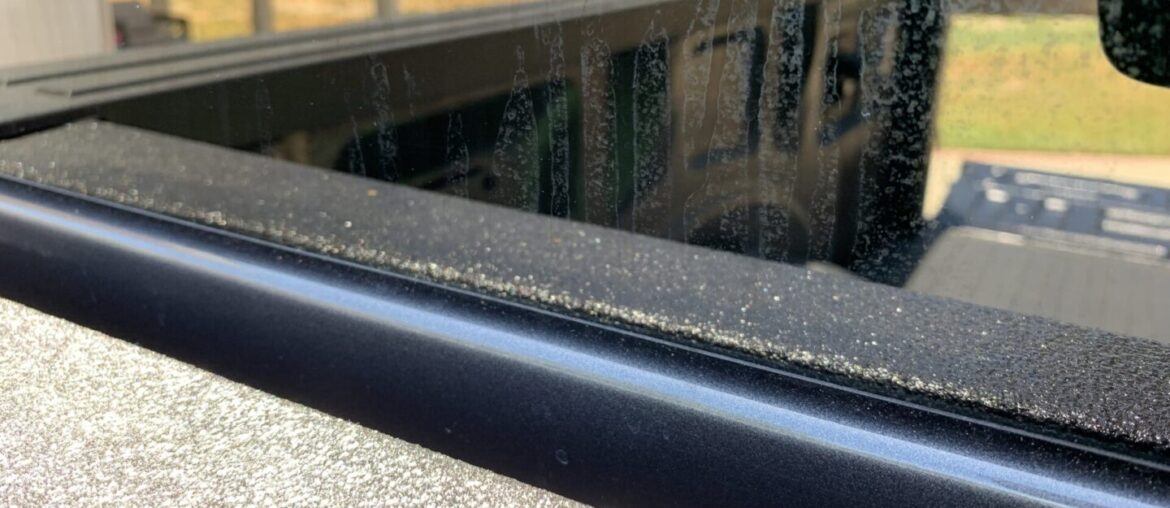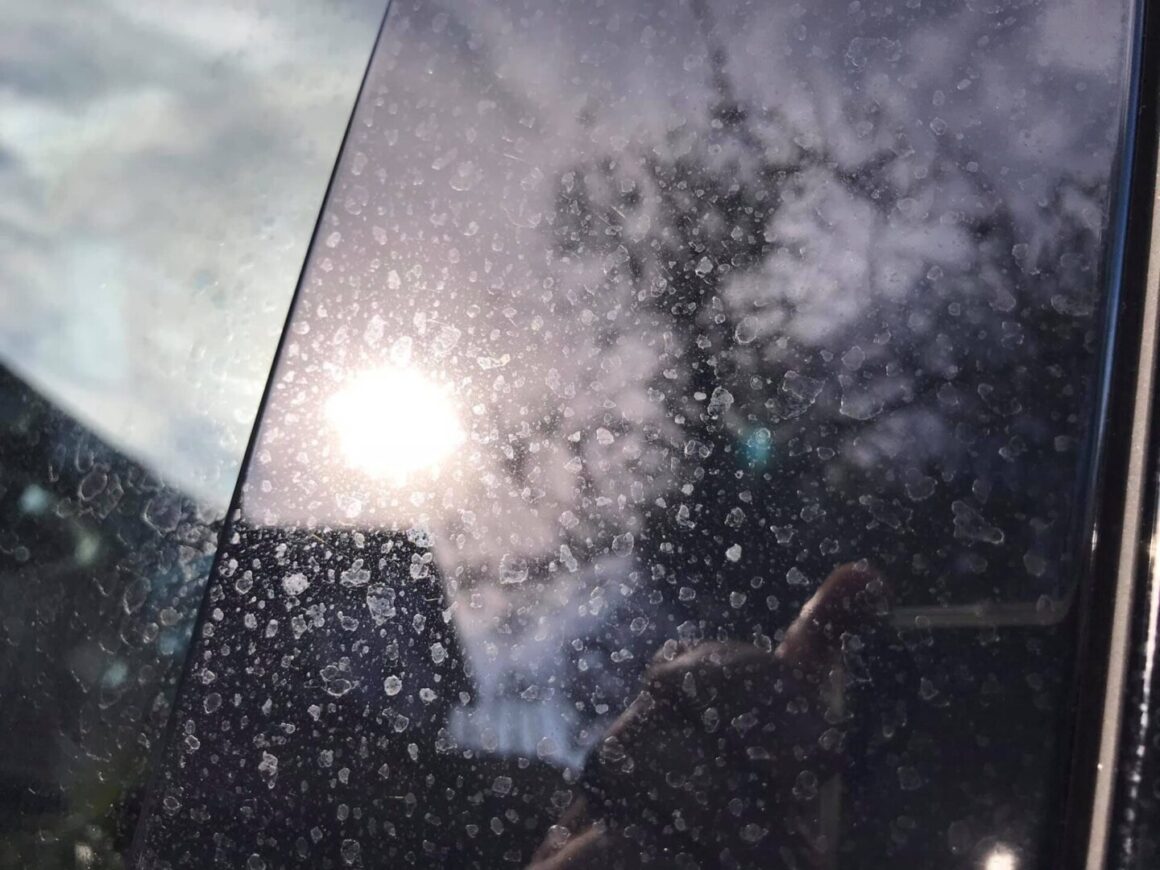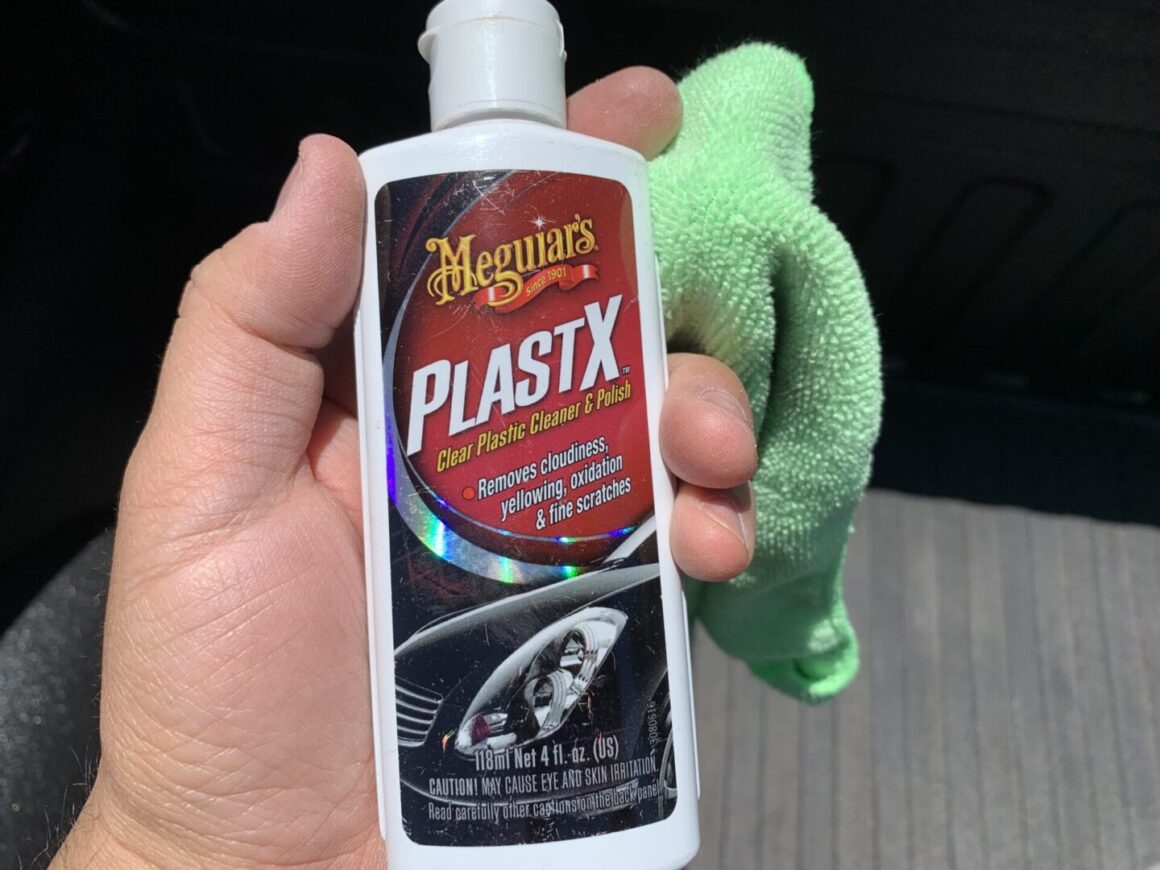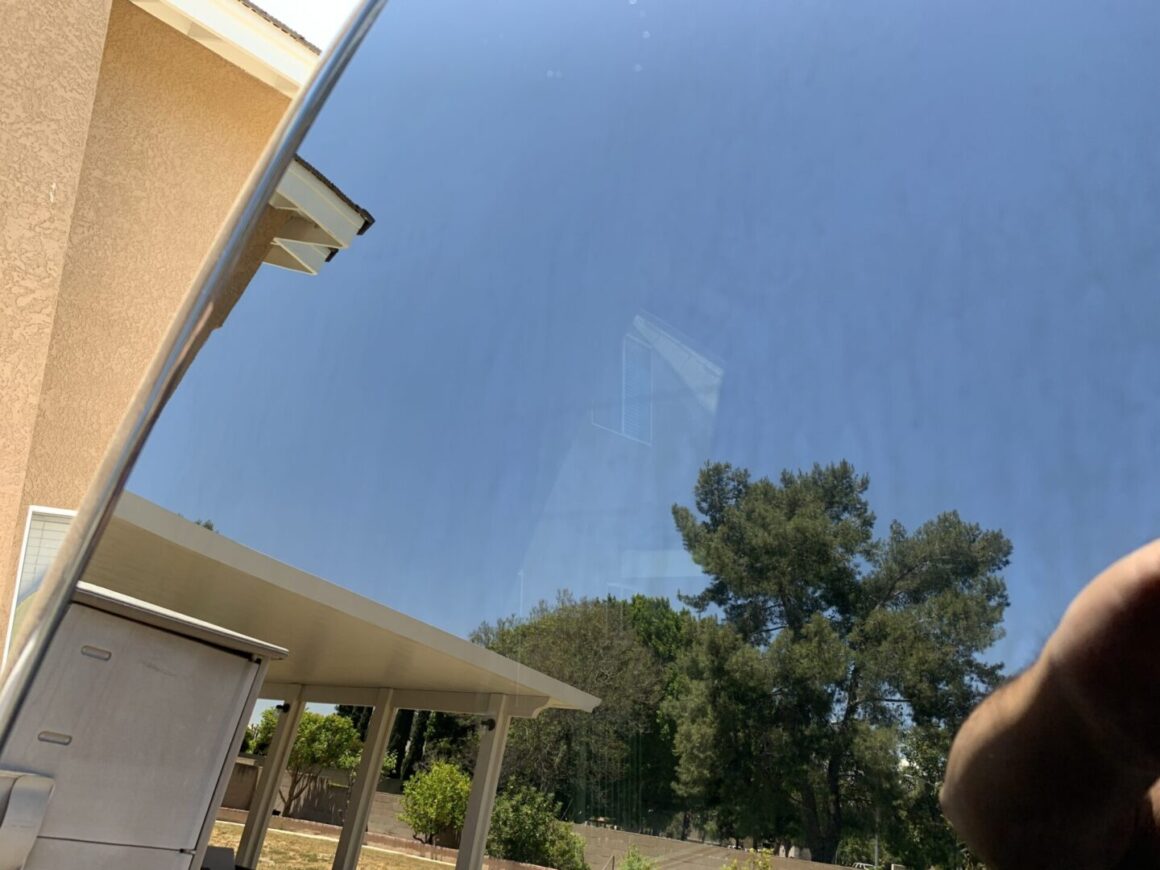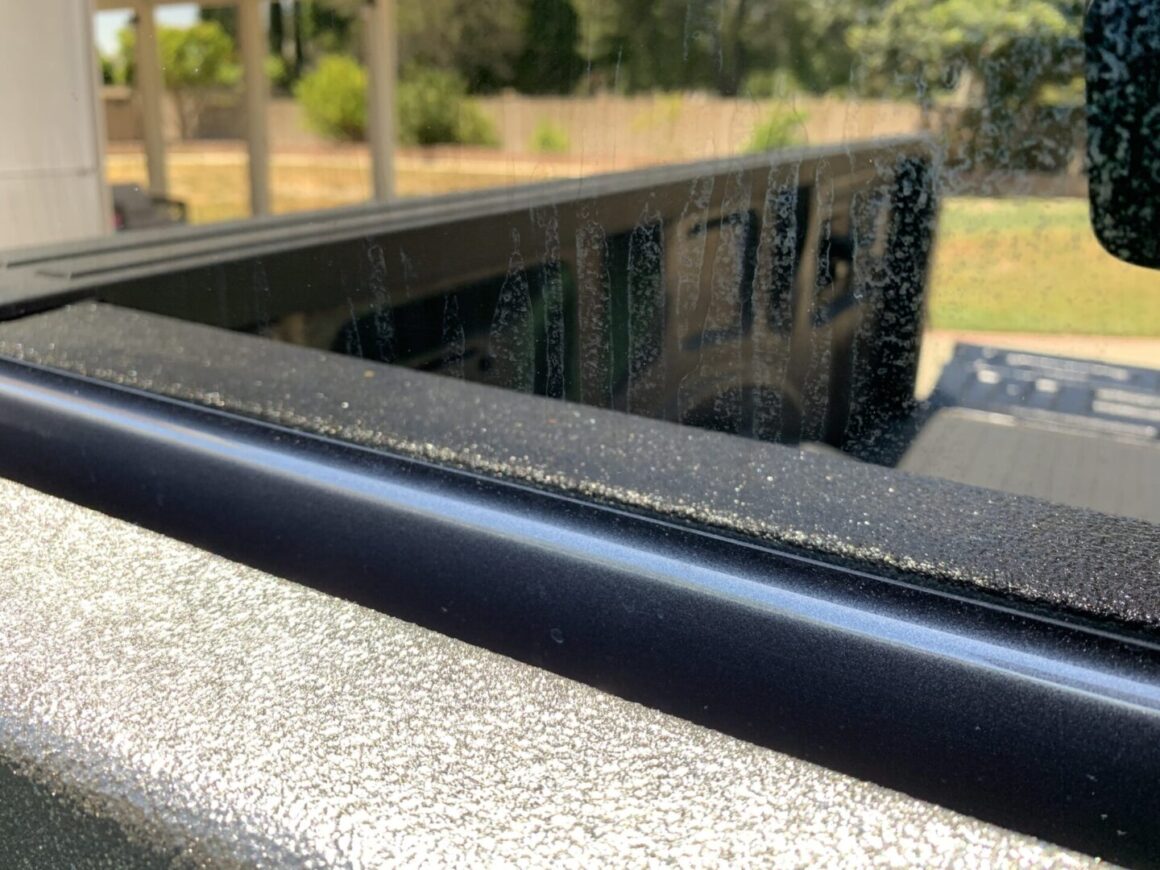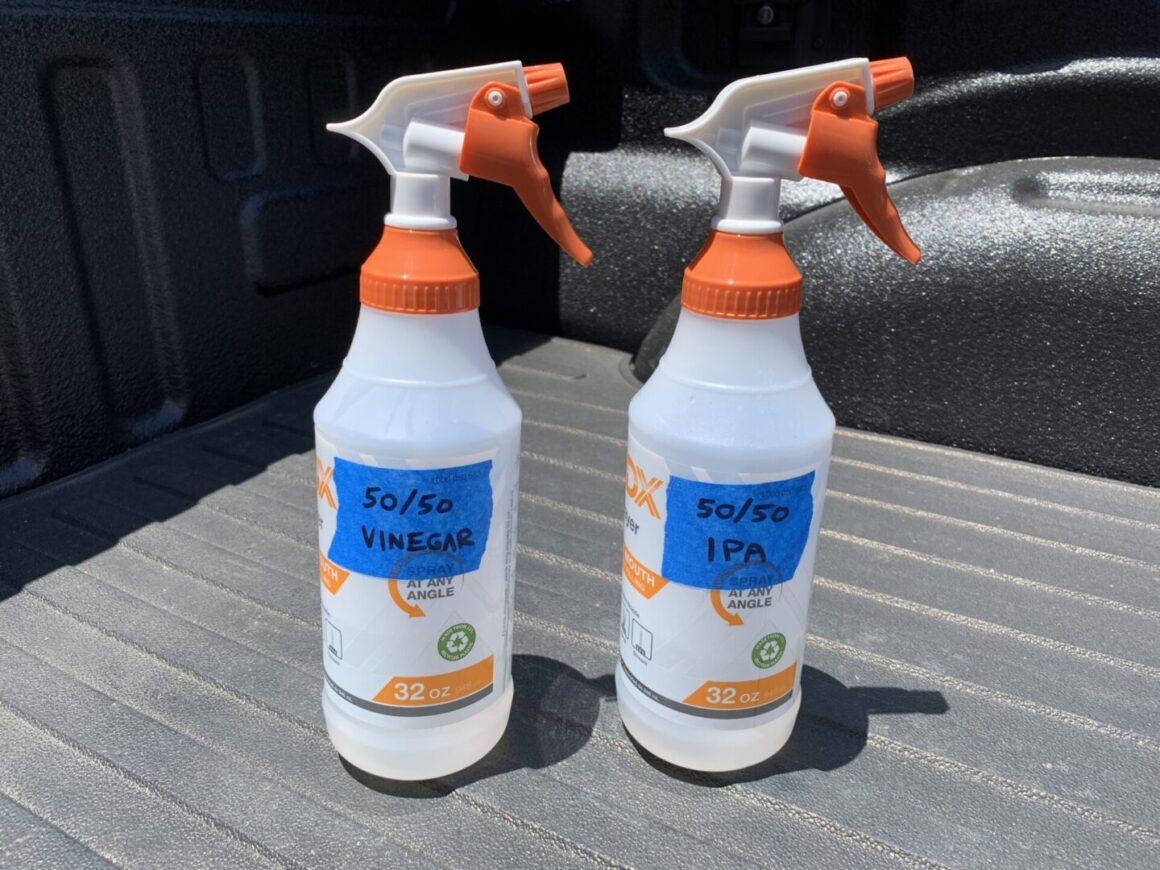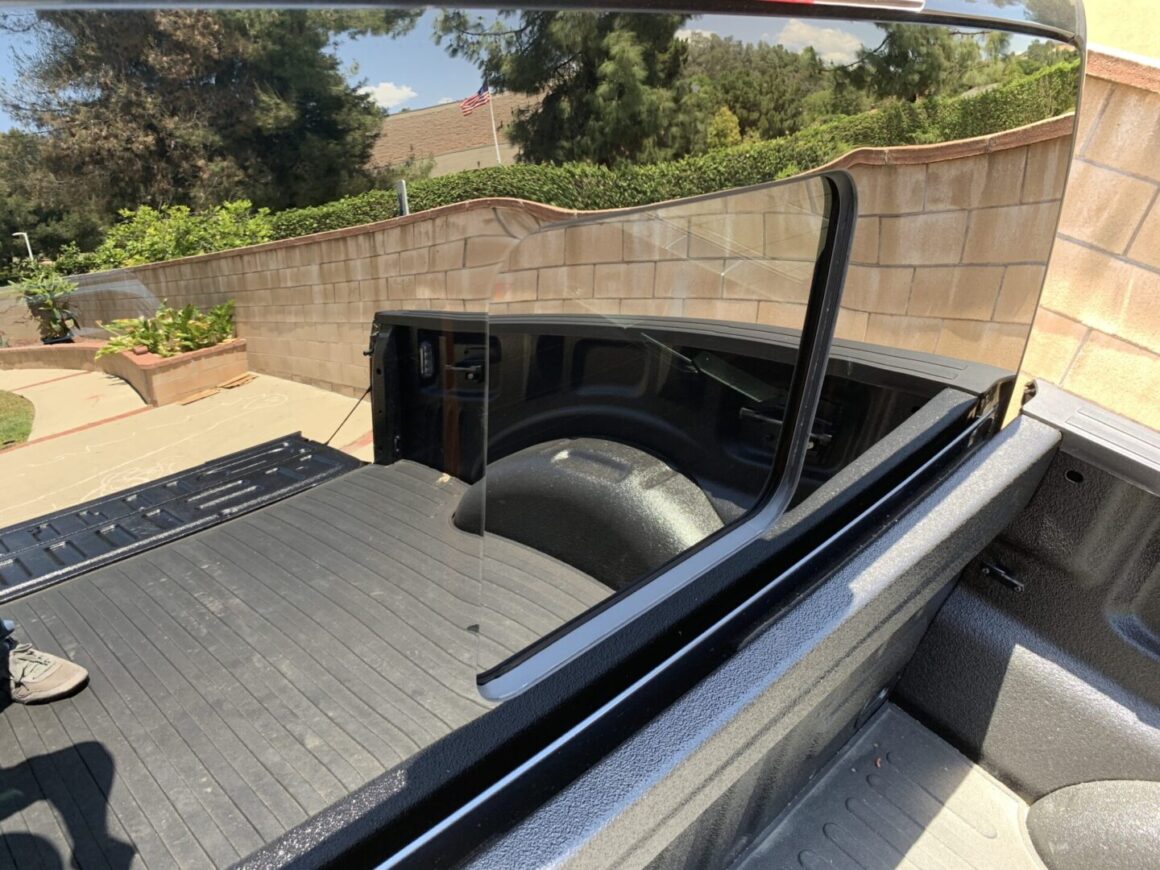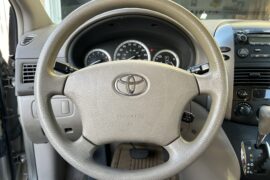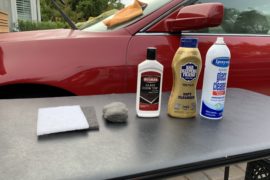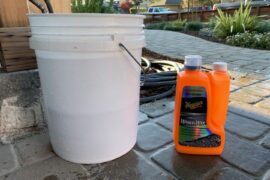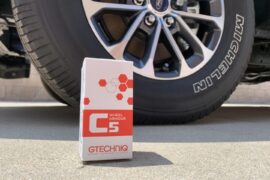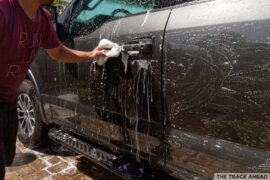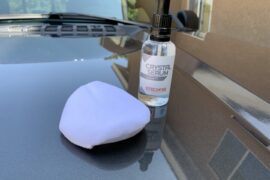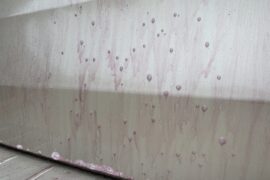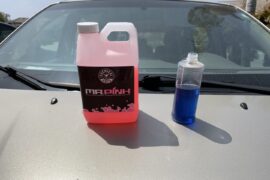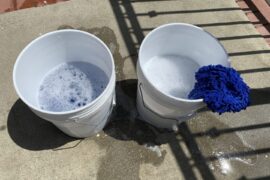When you make purchases through links on this site, The Track Ahead may earn an affiliate commission. Also, these posts are based off my own experiences. I am not responsible for any action you take as a result of reading this. Learn More
A common but frustrating issue that car owner’s find themselves dealing with is hard water spots on window glass. These water spots can become “etched” into the glass, sometimes being so stubborn to remove, that it cannot be removed by normal car washing, glass cleaning, or even with rubbing alcohol or vinegar. When hard water spots are this hard to remove, you may need to start looking into polishing the surface of the glass.
Hard water spots tend to occur when water has been left on the window surface for a prolonged period of time. Depending on the water source, it may have mineral deposits that remain on the glass after the water has evaporated. This is the whitish residue that is left behind and will eventually “etch” itself into glass if not cleaned off in a timely manner. A lot of times, this happens with a car that is parked next to grass that has sprinklers. The sprinklers spray the vehicle over and over again, and the mineral deposits eventually stick to the car’s clear coat. The longer the car goes without washing, the harder it will be to remove. Even new vehicles can come with hard water spots already on the glass depending on where and how the vehicle was stored.
To deal with water spots, there are two ways of removing it. First, you can chemically neutralize the water spot with an acidic solution. Since the water spot is mainly an alkaline, it can be neutralized with something more acidic such as vinegar. There are also specially formulated water spot removers on the market that deal with this very issue in a similar fashion. The second way to remove the water spots is to do it mechanically with abrasion. This method will usually take care of removing most water spots from glass that you might encounter. Note that there are varying degrees of aggressiveness when mechanically abrading the glass, but you should always start out using the least aggressive method when doing this.
In this guide, I focus on using a plastic cleaner/polish called Meguiar’s PlastX. This product is generally used to polish plastics, but I’ve found it to be useful for mild hard water spots on glass that can’t be removed chemically. The level of abrasion with this formula is quite mild, so it has negligible effect on the clarity of the glass. You don’t even need to use a machine polisher; you can actually do all of this by hand with either a microfiber towel or a microfiber applicator pad (preferred). If you have a considerable amount of glass that needs water spot removal, then you might consider using a machine polisher, although you can still do it by hand; you just need a bit it of elbow grease.
Tools & Materials
Meguiar’s PlastX
This clear plastic cleaner/polish comes in a gel-type formula that according to Meguiar’s: removes light oxidation, chemical degradation, surface contamination, stains and light surface scratches from vehicle plastics such as headlights and tail lights. Since it’s safe to use to do light polishing on plastics, I figured it would be perfectly fine to use on window glass.
Meguiar’s G12310 PlastX Clear Plastic Cleaner & Polish, 10 Fluid Ounces
Applicator Pads
Applicator pads are ideal for applying and polishing the glass by hand. It’s a nice firm pad, which provides a nice consistent surface to polish with.
VIKING Microfiber Applicator Cleaning Pads, 6 Pack
Microfiber Towels
You can actually use microfiber towels to polish if you really want to and while it does work, it may not provide as nice and consistent pressure as you might get with an applicator pad. Regardless, you will need microfiber towels to wipe off the excess PlastX after polishing.
AmazonBasics Microfiber Towels (24-Pack) / Zwipes Microfiber Towels (48-Pack)
How to Remove Hard Water Spots from Windows by Hand using Meguiar’s PlastX
This is the rear window glass of my new Ford F-150. I’ve already washed the car with car soap and dried it completely. You can see some slight discoloration with what looks like water dripping down the glass, but it’s a bit difficult to tell exactly. No matter what the issue is, you can definitely tell there is something that has “etched” itself into the glass.
Here’s another view of the glass with more focus on the actual hard water stains, making it a bit clearer to see the hard water stains.
You’ll hear recommendations to try removing hard water spots with a vinegar or IPA (isopropyl alcohol/rubbing alcohol) solution. This isn’t a bad idea at all to start out with; again, start out with the least aggressive method. I’d say using either of these solutions should probably be your first attempt; if they work then great, you can remove the rest of the water spots with the same solution. If it doesn’t work (like it did not with my car), then you can proceed to a more aggressive method.
If you’re going to use Meguiar’s PlastX, the first thing you might want to do is to test out a small area on your window first. If for some reason, polishing with PlastX causes damage to the glass, then doing it in a small test spot will limit the affected area. But PlastX really shouldn’t be doing damage to your glass as it is a very mild polish intended for use on plastics.
You can either polish with a microfiber towel or with an applicator pad, although it’s preferable to do use the latter.
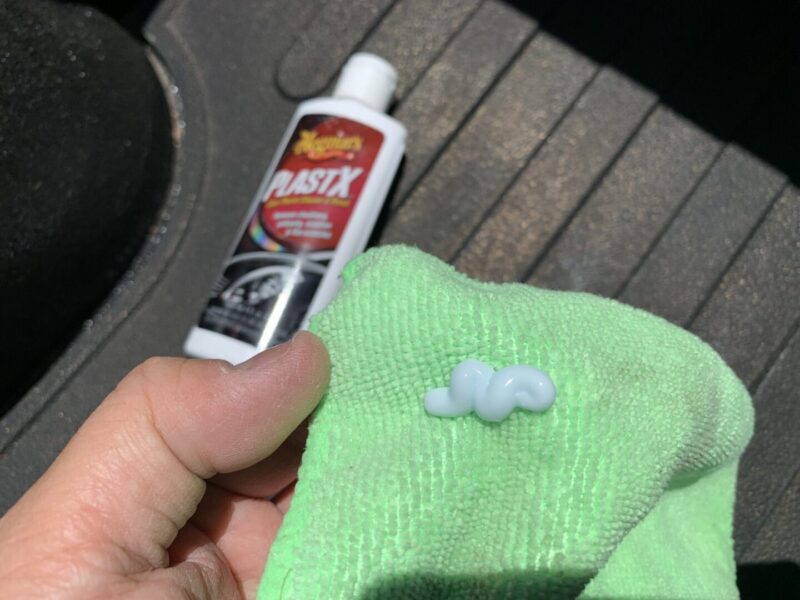

I tried doing a test spot with a microfiber towel and Meguiar’s PlastX. It’s as easy of squirting some PlastX onto the towel/pad, spreading it over the water spots, and polishing it with a circular motion. I like to do both clockwise circles and then run over the same areas with counter-clockwise circles. Once you’re done, use a clean section of another microfiber towel and wipe the excess PlastX away. As you can see below, the PlastX is doing well with it removing water spots from a section of my rear window.
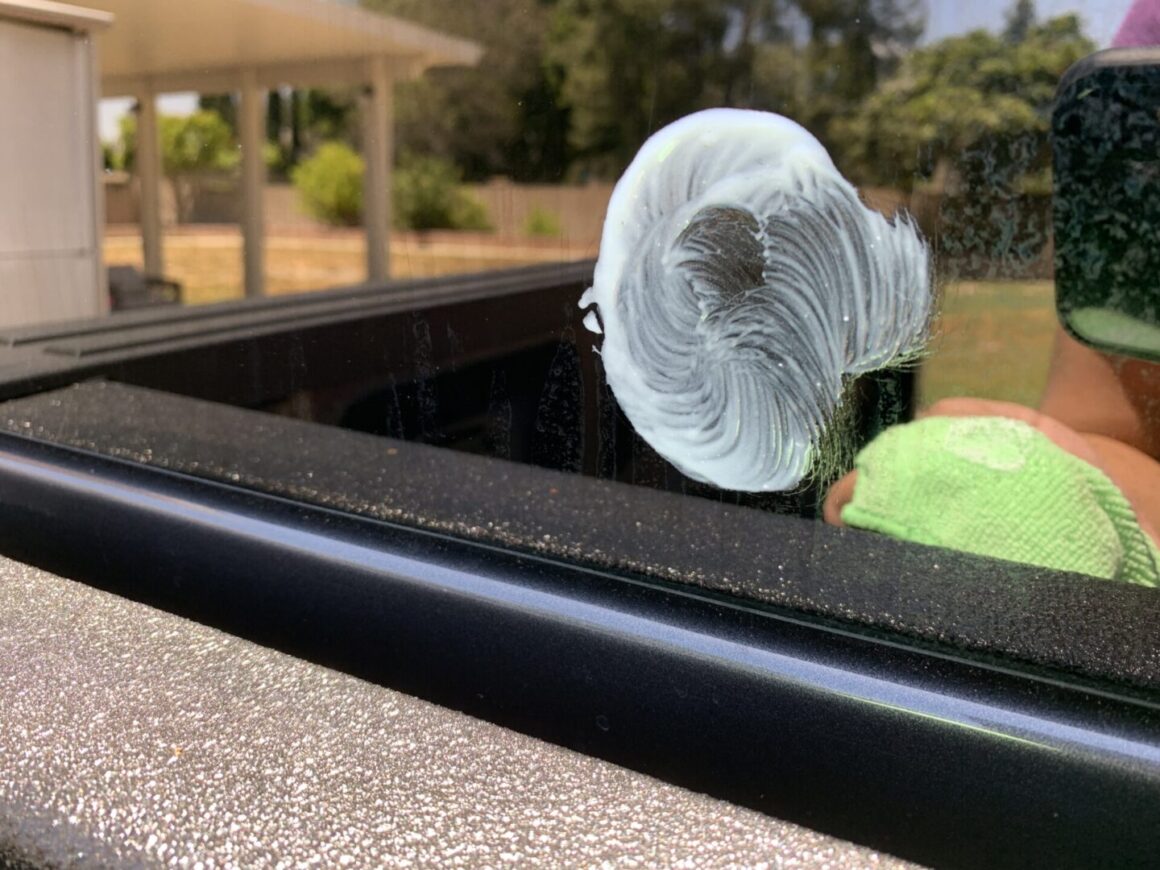
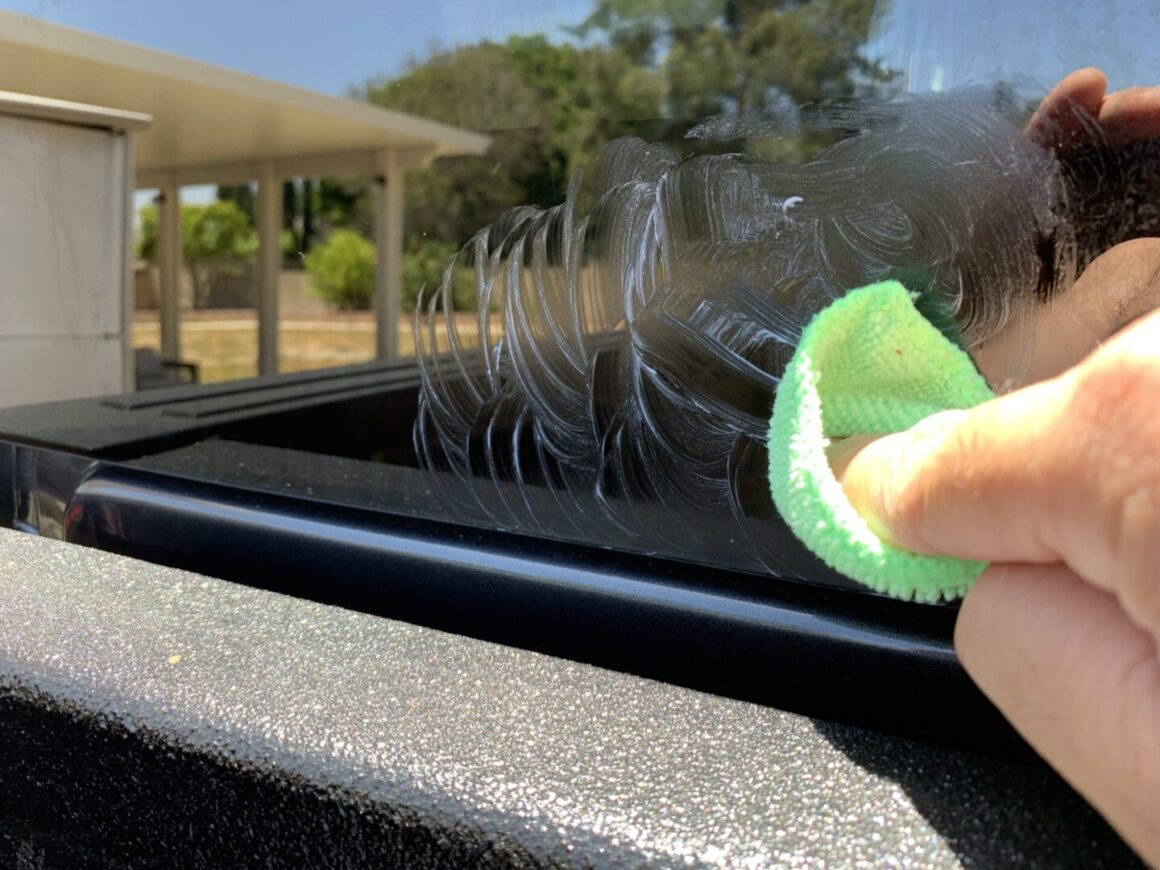
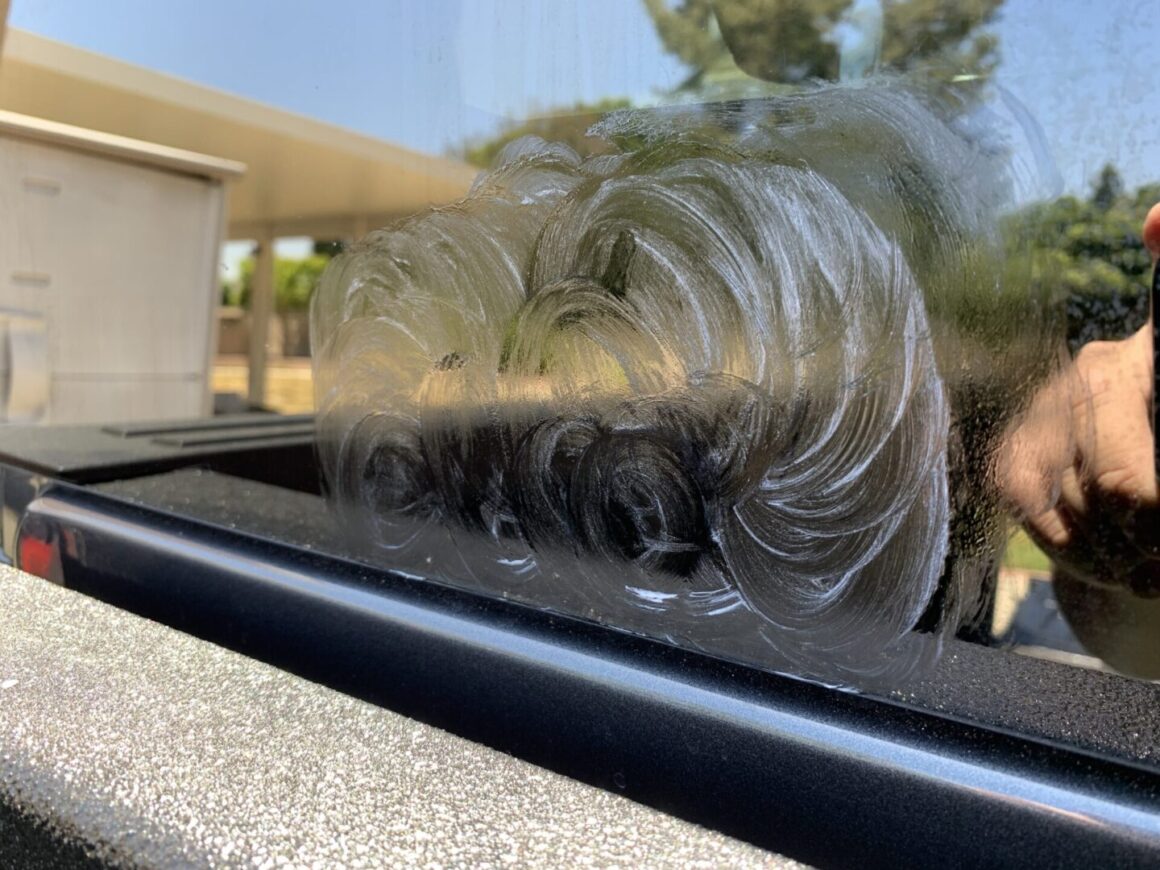
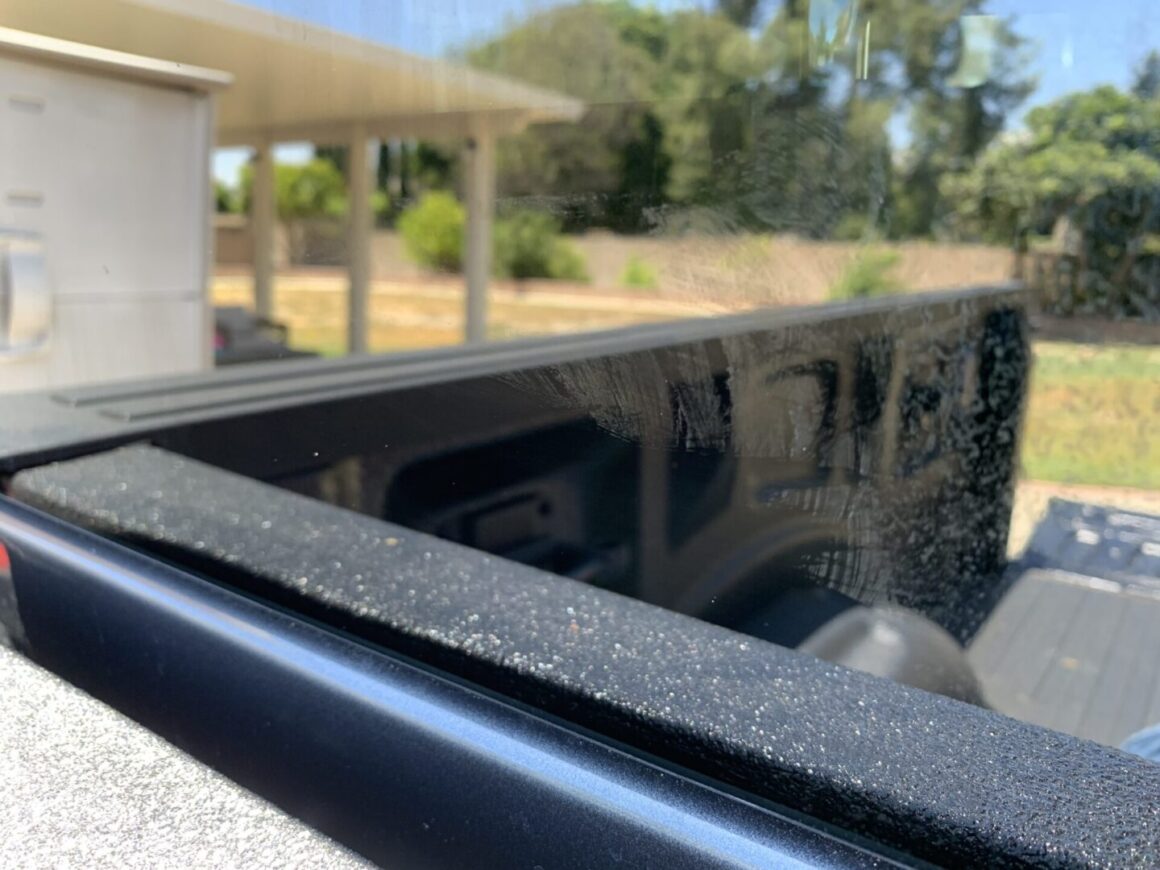
Now that I know that Meguiar’s PlastX works for removing the water spots on my car, I am using an applicator pad with PlastX to hand polish the whole rear window. This takes a bit of sweat equity if you’re doing it by hand, but I only had water spots on certain parts of the rear window to deal with. If I had water spots on all my windows, I’d probably opt to polish all the glass with a machine polisher.
One thing to be aware of is that if you’re polishing by hand, be cognizant of the contact you’re making on the glass with your hand and pad. You might think that you’ve polished the entire affected area of the glass, but you might have missed a spot or two. After polishing with PlastX, wipe away with a microfiber towel, and check your work. See if you’ve missed any spots and re-polish those areas as needed.
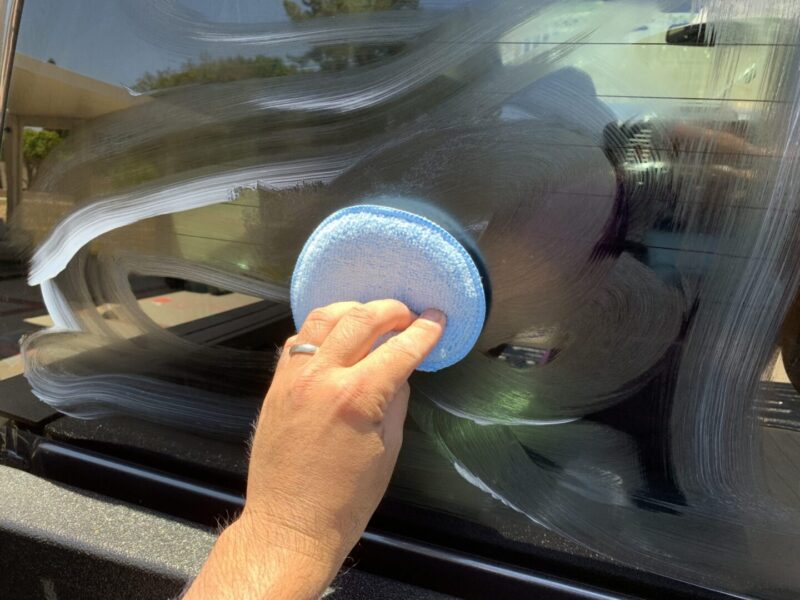
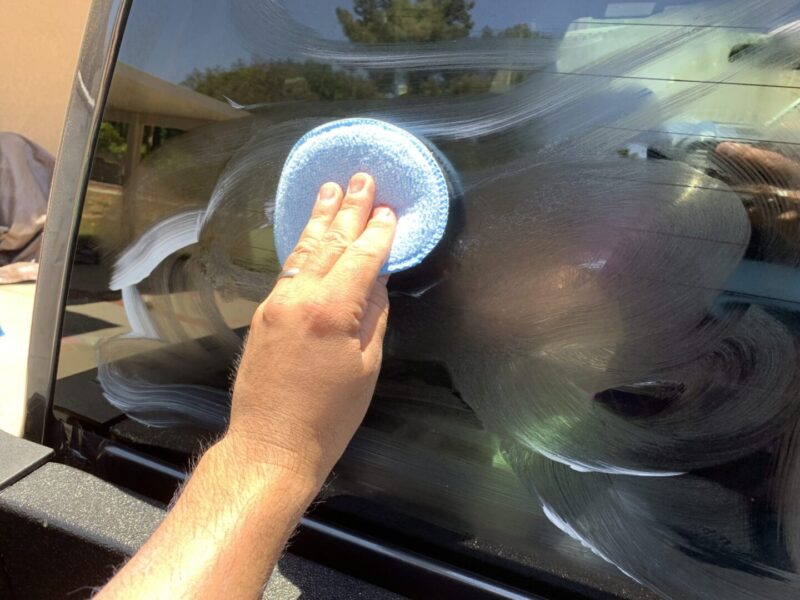
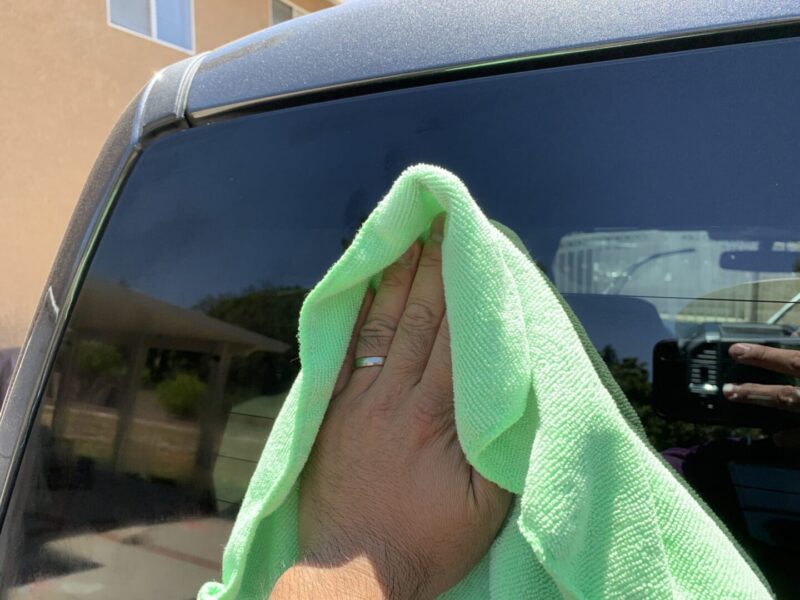
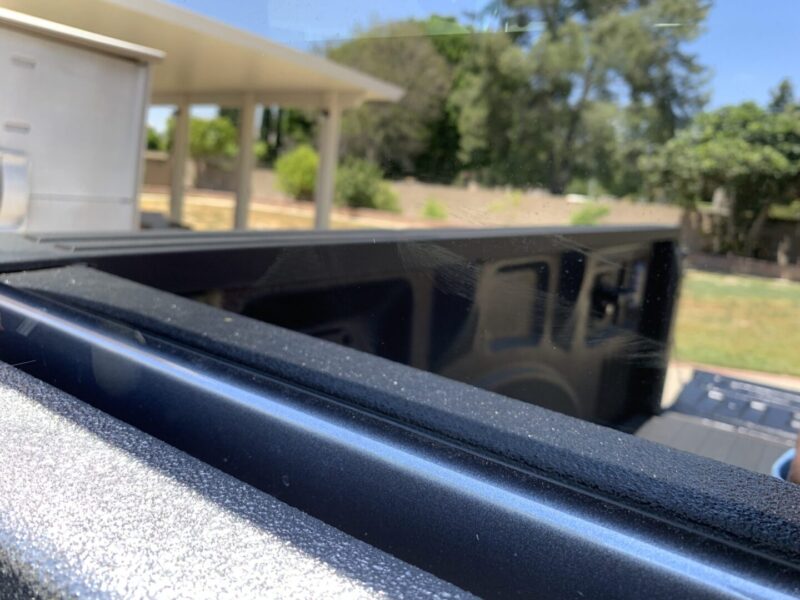
Once you’ve finished, you can sit back and appreciate the results of all that hard work. The great thing about removing water spots with Meguiar’s PlastX by hand is that you don’t need a lot to get started. You can just grab some Meguiar’s PlastX and a microfiber towel and have the ability to polish hard water spots out by hand anytime you need to. There’s no need to bust out a machine polisher or deal with more involved methods such as using steel wool. Now, there is a time and place for these more aggressive mechanical methods of removing more stubborn water spots, but I’ve found polishing with Meguiar’s PlastX seems to get most mild water spots out of glass quite effectively.

